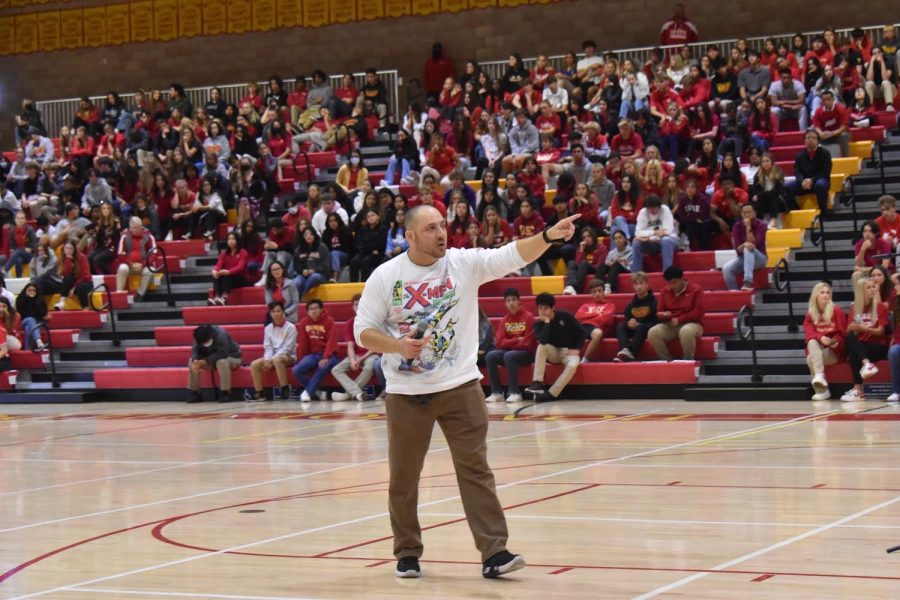Your Thoughts Don’t Need to Become Your Actions
Kevin Hines, suicide awareness activist, speaks on the importance of mental health and understanding the effects of suicide. Throughout the week, CCHS students focused on reminding one another that they are loved by all.
Every other day someone attempts to end their life by jumping off the Golden Gate Bridge. 1,700 people; less than one percent survive. Kevin Hines is part of the one percent.
Cathedral Catholic High School refuses to shy away from the conversations regarding mental health and suicide. The CCHS community has felt the consequences of mental illness time and time again. Yellow Ribbon Week is dedicated to ensuring that students feel loved and seen. Because they are.
Throughout the week, yellow ribbons were pinned to students on campus and positive affirmations were painted on rocks and scattered throughout the school.
On Wednesday, a club carnival was held to promote awareness for suicide prevention. This succeeded in promoting unity on campus; furthermore, a sense of family that students can turn to in times of personal struggle.
Thursday, suicide prevention activist Kevin Hines shared his personal experience regarding his battle with mental heath. In the year 2000, Hines was only 19 when he was diagnosed with bipolar disorder. Shortly after his diagnosis, Hines jumped off the Golden Gate Bridge. He was one of 36 who survived the fall.
Since his attempt, Kevin Hines sought to educate others on the effects of suicide and the importantnce of mental health.
During his speech, Hines described his heartbreaking, humble upbringing. A boy in the broken foster care system, credited to his biological parents, who turned to drugs and prostitution to provide for him and his biological brother. While he was shuffling through foster homes, he was neglected by those who were appointed to provide for him, contributing to lasting abandonment issues.
In one particular foster home, Hines and his brother contracted severe bronchitis. While Hines overcame this sickness, his brother was not so lucky. The death of his brother contributed greatly to disorders that overtook his brain since before he could speak.
During his early life, Hines was bullied and harrassed while in elementary school. Hines says, “When I was a fourth grader, the eighth graders picked me up and held me by my legs upside down and placed first in a garbage can because I was black.”
Hines uses his personal experience to educate those on the long term effects of bullying. He says that the bullying he endured played a large role in his suicide attempt.
In September of 2000, Hines took a bus to the Golden Gate Bridge and contemplated ending his life. Hines says, “I prayed for one thing, that someone would see me, see my pain.”
After the 45 minute walk to the railing of the twenty-five story bridge, in tears, Hines launched himself over the ledge and began the fall to his death.
Hines says, “The very millisecond my hand left the rail, I had an instantaneous regret for my actions, and the absolute 100 percent recognition that I had just made the greatest mistake of my life and it was too late.”
26 people who survived the fall are still alive today. Of that 26, 19 have come forward and attested to the same thing as Hines: instant regret.
During Hines’ speech, he continued to remind Cathedral students the importance of admitting to needing help and that everyone is worthy and matters.
Hines says, “Never again silence your pain… because your pain is valid, your pain is worthy of my time and others.”
TheCathedral Catholic community sees you. You are worthy. You are important. You are loved. You are seen.

Brooke Quirarte is in her senior year at Cathedral Catholic High School and her third year at Dons Press. Brooke was the head of Social Media her sophomore...

Sarah Brown. Cheerleader, journalist, and vegan. Sarah has three siblings, all in college and her sister attends Colorado State University. She failed...





















































